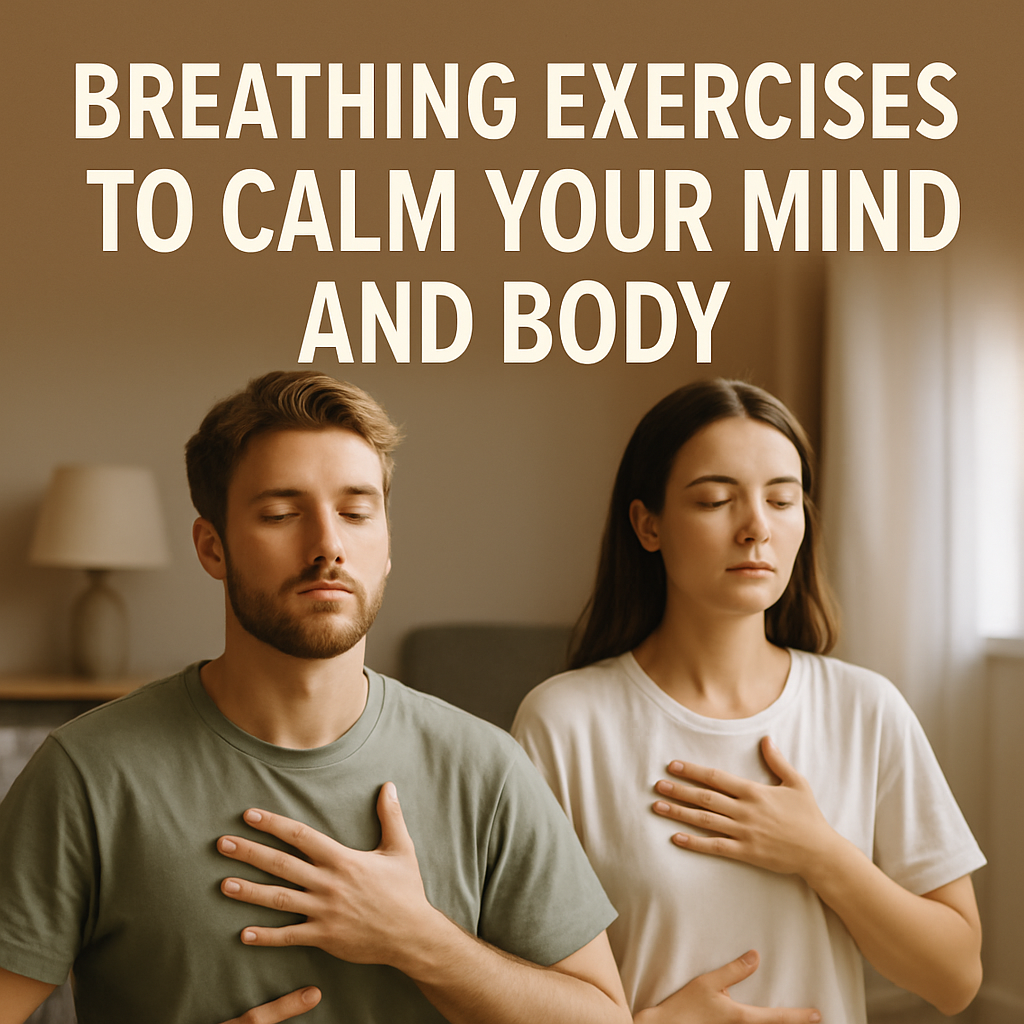Your breath is always with you, making it one of the most accessible tools for managing stress and enhancing well-being. With just a few simple breathing exercises, you can reset your nervous system, improve focus, and feel more in control of your emotions. Here’s how to use your breath to find calm in any moment.
Why Breathing Matters
Intentional breathing affects both your body and mind:
- Activates the parasympathetic nervous system (rest and relax mode)
- Lowers heart rate and blood pressure
- Reduces anxiety and improves concentration
When you control your breath, you influence your entire emotional state.
1. Box Breathing (Square Breathing)
A simple, balanced breath technique:
- Inhale for 4 seconds
- Hold for 4 seconds
- Exhale for 4 seconds
- Hold for 4 seconds
- Repeat for 1–3 minutes
Use it when feeling overwhelmed or before stressful tasks.
2. 4-7-8 Breathing
Great for relaxation or falling asleep:
- Inhale through the nose for 4 seconds
- Hold your breath for 7 seconds
- Exhale slowly through the mouth for 8 seconds
Repeat for 4 rounds to soothe the nervous system.
3. Diaphragmatic Breathing (Belly Breathing)
Deep breathing that uses your full lung capacity:
- Place one hand on your chest and one on your belly
- Breathe in slowly through your nose, letting your belly rise
- Exhale slowly and feel your belly fall
Do this for 3–5 minutes to reduce physical tension.
4. Alternate Nostril Breathing
A balancing technique from yoga tradition:
- Close your right nostril with your thumb, inhale through the left
- Close the left nostril with your ring finger, exhale through the right
- Inhale through the right, then exhale through the left
- Repeat for several cycles
It calms the mind and balances both hemispheres of the brain.
5. Equal Breathing
A steady rhythm for mental clarity:
- Inhale for 5 counts, exhale for 5 counts
- Keep the breath smooth and steady
This is ideal during meditation or when you need to reset your focus.
Tips for Breathing Practice
- Sit comfortably or lie down
- Close your eyes and relax your body
- Focus on your breath—if your mind wanders, gently return to it
- Use soft background music or silence
Your Breath Is Always There
You don’t need fancy equipment or perfect conditions. Your breath is a powerful anchor to the present moment. With regular breathing exercises, you can train your body to stay calm, your mind to stay clear, and your heart to stay open.
